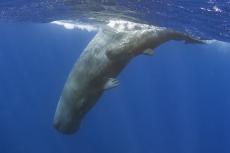Populations of tiger sharks in Atlantic and Indo-Pacific found to have evolved separately
Genetic research has confirmed that two distinct populations of tiger sharks in the Atlantic and Indo-Pacific oceans have evolved separately.
Researchers have discovered that the tiger sharks in the Atlantic are genetically different from the ones in the Indo-Pacific Ocean, according to a study published in the Journal of Heredity on 10 August 2021.
According to co-author Professor Mahmood Shivji, director of the Save Our Seas' Shark Research Centre, the two populations had not intermingled to reproduce for a long time. “This long-term separation between Atlantic and Indo-Pacific tiger sharks has resulted in them developing into separate populations, each with its own unique genetic diversity.”
The study also confirmed findings that tiger sharks from Hawaii are genetically different from those in the Indian Ocean.
For this study, the researchers used genome-scale single nucleotide polymorphisms (SNPs), instead of mitochondrial DNA, to scrutinise the structure of tiger shark populations at a finer resolution and with higher precision than is usual.
“‘SNPs repeat across the entire genome. This increases the amount of information for geneticists to work with relative to previous surveys that were limited to small subsections of genetic information,” explained Professor Shivji.
Armed with these findings, the study recommends tailored management plans and conservation efforts to preserve their genetic diversity and potential to survive rapid changes taking place in the oceans; the Atlantic and Indo-Pacific populations should be treated as separate and that a targeted conservation plan be devised for the Hawaiian tiger sharks as well.
















































